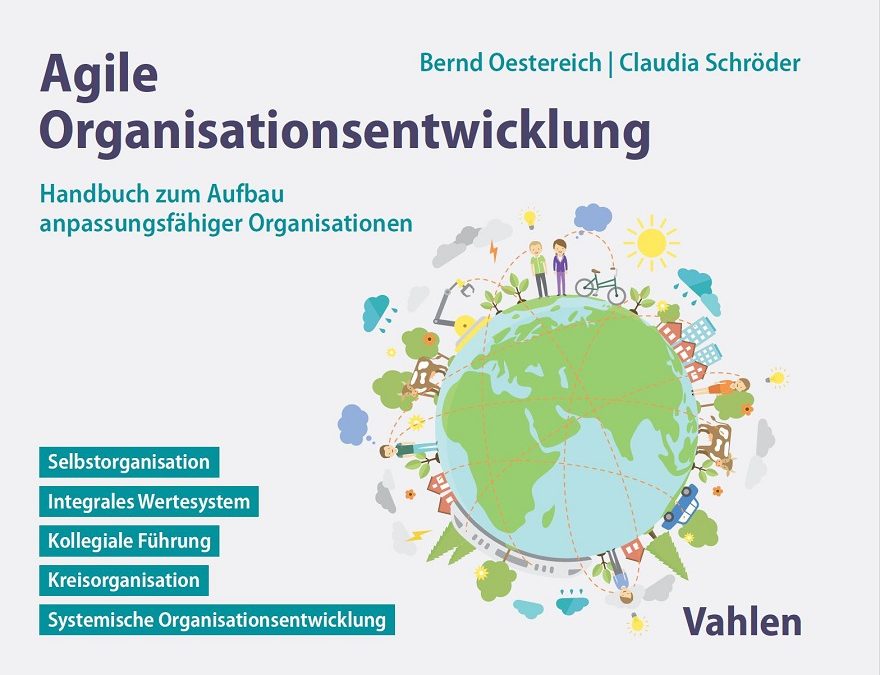The book “Agile Organisational Development: Manual for building adaptable organisations” by Bernd Oestereich and Claudia Schröder is aimed at people who want to try out collegial self-organised leadership and agile organisational development in practice.
It considers issues such as attitudes, empirical knowledge and tools. It combines approaches from the agile development of technical systems, integral value systems, circular organisation models and systemic ideas for the development of social networks. It is designed as a handbook and is suitable both as a book to introduce the topic of agility and as a reference book for practical methods and tools in this environment.
The book is divided into three parts:
Part I – Basic components of agile organisational development
This chapter deals with the components that should at least come together to be able to build and anchor a resilient and sustainable agile organisational development. It is all about what is essential in agility.
Part 2: Adaptation model
This chapter explains an approach to change that can be used as a rough template for your agile transformation processes. Even though every organisation has its initial situation and specific intentions and challenges, orientation towards ideal-typical patterns of procedure and action is helpful.
Part 3: Tools and aids
Here you will find lots of practical instructions, support, examples and concrete ideas to try out the first steps in your organisation or to understand them theoretically.
Who is this book aimed at?
Bernd Oestereich and Claudia Schröder describe this book as an updated interim status of their experiences, with which they want to encourage immediate practical action.
It is aimed at people who want to try out collegial leadership and agile self-organisation in practice – either in their organisation or as professional companions of an organisation.
This book is a continuation of “Das collegial geführte Unternehmen: Ideas and practices for the agile organisation of tomorrow“, by the same authors. Many concepts were taken from this book but have now been supplemented and expanded.
How to read the book.
You can read the book crisscross and selectively. To make this easier, the authors have included many direct cross-references with page numbers. For quick selective readers, they have highlighted important keywords and statements.
How the contents of the book may be used.
The authors invite you to take the topic further with or without them. All specialist graphics (except photos, illustrations and icons) are available under a Creative Commons Licence and may be used freely – also commercially and in competition with them, if the origin is clearly stated.
I recommend this book to anyone who wants to gain new perspectives on agile organisations and agile transformation. I consider it to be efficient, handy, straightforward and at the same time, a comprehensive manual for dealing with agility and new work. The book was read for you by Ing. Mag.(FH) Bernhard Fink, MBA


Recent Comments